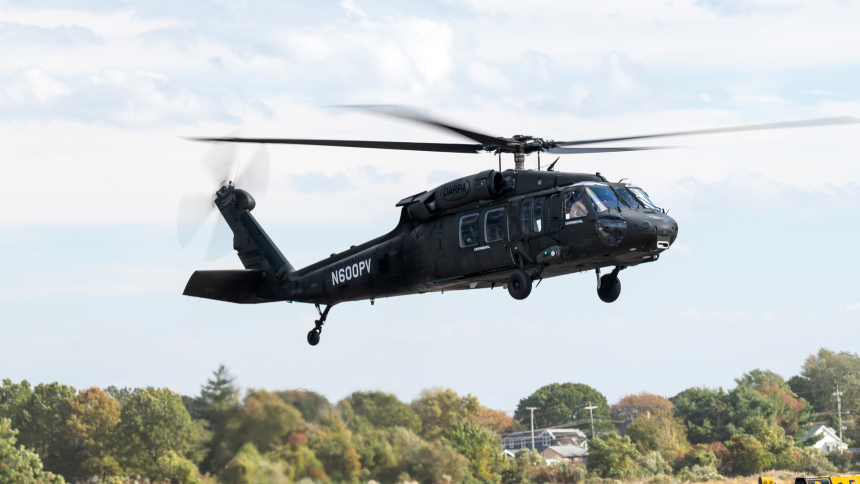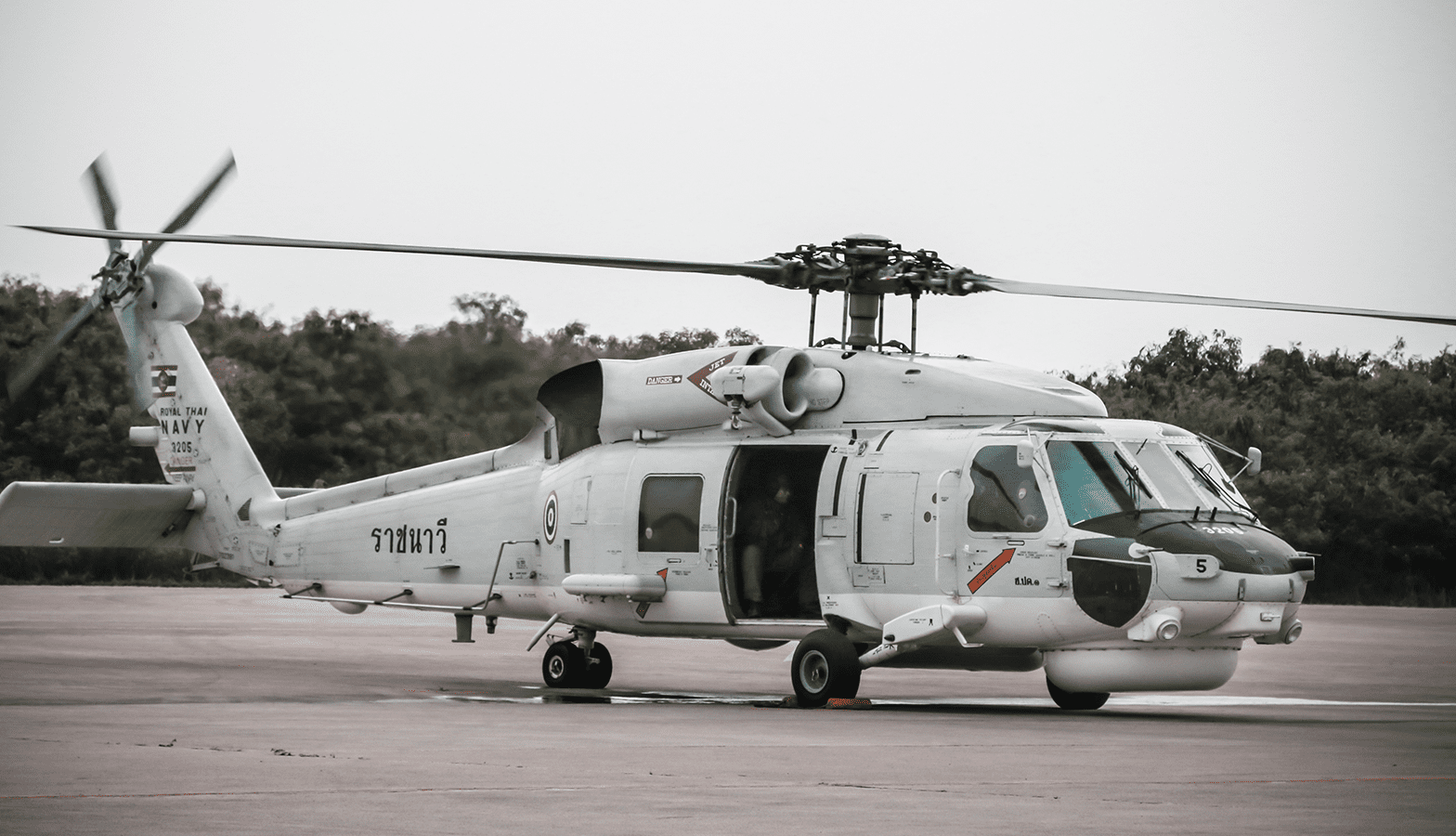The UH 60: A Versatile Aircraft for Armed Force and Civilian Use
The UH-60 helicopter, with its beginnings going back to the late 1970s, has actually progressed into an important possession for both noncombatant and armed forces industries. Its multifunctional capabilities, varying from troop transportation to emergency medical solutions, show a remarkable flexibility to different operational needs. As technical improvements continue to enhance its efficiency and flexibility, the implications of these growths for future applications require careful assessment. Understanding the full scope of the UH-60's influence may disclose insights right into its potential trajectory and value in a progressively intricate operational environment (uh 60).
Historic Overview of the UH-60

At First, the UH-60 was deployed to sustain troop transport, clinical evacuation, and logistical procedures. Its intro marked a substantial improvement in helicopter innovation, incorporating modern avionics and survivability functions. The Black Hawk's ability to run in challenging settings, including adverse weather and battle zone, solidified its track record as a reputable workhorse.
Over the years, the UH-60 has actually undergone many upgrades and variants, adapting to the advancing demands of military procedures. Its legacy includes engagement in essential problems, showcasing its adaptability and efficiency in numerous scenarios. The Black Hawk remains a keystone of military air travel, showing the enduring significance of technology in aerial transport and assistance.
Armed Force Goals and applications
Frequently deployed in varied functional contexts, the UH-60 Black Hawk helicopter offers a wide range of armed forces applications that are essential to mission success - uh 60. This flexible aircraft is primarily made use of for army transportation, enabling rapid motion of soldiers to and from battle areas. Its ability enables the transportation of approximately 11 totally outfitted soldiers, making it an essential asset for ground forces
The UH-60 is also integral to clinical discharge goals, giving speedy support for injured personnel under attack. Furnished with innovative clinical facilities, it can deliver casualties while making certain continual clinical treatment. The helicopter's utility extends to reconnaissance and surveillance goals, where it gathers crucial intelligence and enhances situational understanding for commanders.
Furthermore, the Black Hawk is frequently used for logistical assistance and supply objectives, delivering essential tools and stipulations to troops in remote locations. Its adaptability is more showed with its ability to run in different environments, from city setups to rugged surfaces. Overall, the UH-60 Black Hawk stays a cornerstone of modern-day armed forces operations, personifying adaptability, reliability, and performance in satisfying mission purposes.
Civilian Makes Use Of and Adjustments
Beyond military applications, the UH-60 Black Hawk helicopter has actually found an array of private usages and adaptations that display its versatility. Initially designed for army transport and logistical assistance, this airplane has been efficiently adapted for numerous civilian roles, consisting of emergency situation medical solutions (EMS), firefighting, and search and rescue operations.
In emergency situation medical services, the UH-60 can promptly carry people to healthcare facilities, geared up with innovative medical devices and employees. Its speed and ability to move enable fast action in crucial circumstances, which is essential in conserving lives. The helicopter's huge cabin permits for clinical groups to operate effectively throughout trips.
In firefighting, the UH-60 has actually been changed to carry water or fire retardant, making it an efficient device in combating wildfires. Its capacity to hover and navigate in tough terrains provides considerable benefits over typical ground-based firefighting approaches.

Technical Innovations
Just how has the development of modern technology influenced the abilities of the UH-60 Black Hawk helicopter? The UH-60 has actually undergone considerable innovations since its inception, considerably boosting its operational effectiveness.

Furthermore, the unification of composite products in the airframe has actually reduced weight while preserving structural stability, adding to raised payload capability and fuel effectiveness. The helicopter's blades system has actually additionally profited from technical advancements, such as noise reduction technologies and improved aerodynamic design, which improve both performance and stealth abilities.
Additionally, the UH-60's versatility to different objective profiles is enhanced by modular systems, allowing rapid reconfiguration for functions ranging from medevac to troop transport. uh 60. The introduction of sophisticated communication systems guarantees real-time data sharing and coordination throughout goals, which is essential in modern-day battle situations. Collectively, these technological technologies have actually transformed the UH-60 into a awesome and functional possession in both armed forces and civilian applications
Future Prospects and Dopes

Additionally, ongoing research study into alternative energy sources, such as hybrid-electric propulsion, provides a possibility for raised fuel efficiency and decreased environmental effect. This lines up with both armed forces and noncombatant objectives for sustainability. The UH-60's adaptability to various roles, from medical evacuation to search and rescue, ensures its continued relevance in diverse functional contexts.
Moreover, partnerships with protection contractors are fostering innovations in weapons and sensing unit modern technology, making it possible for the Black Hawk to properly respond to contemporary dangers. As the armed forces landscape develops, the UH-60's design will likely embrace modularity, enabling quick reconfiguration based upon objective demands. In general, the future of the UH-60 is bright, characterized by boosted efficiency, convenience, and a steady dedication to satisfy the challenges of modern war and humanitarian initiatives.
Verdict
The UH-60 helicopter exhibits flexibility through its twin function in noncombatant and armed forces procedures. Its durable design and progressed technological features promote a large range of goals, from troop transportation to emergency situation medical solutions. As continuous innovations proceed to improve its capabilities, the UH-60 stays a vital asset throughout various functional environments. The long-lasting importance of this airplane appears, guaranteeing its significance in future military and civilian applications.
The UH-60 Black Hawk helicopter, a critical property in modern armed forces air travel, was initially presented in the late 1970s as uh 60 component of the U.S. Army's mission for a reliable and versatile utility helicopter.Often deployed in diverse functional contexts, the UH-60 Black Hawk helicopter offers a plethora of army applications that are critical to mission success. In general, the UH-60 Black Hawk stays a foundation of contemporary armed forces operations, symbolizing flexibility, dependability, and efficiency in satisfying mission objectives.
As the military landscape evolves, the UH-60's design will likely embrace modularity, allowing for rapid reconfiguration based on mission needs.The UH-60 helicopter exhibits adaptability with its double role in military and civilian procedures.